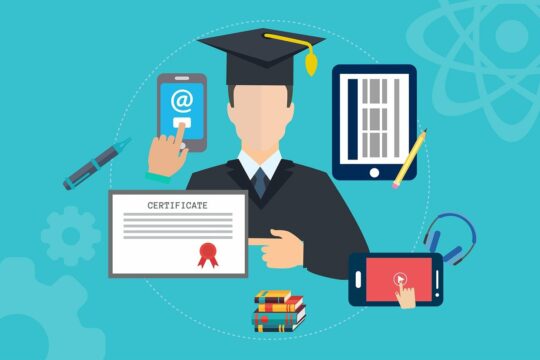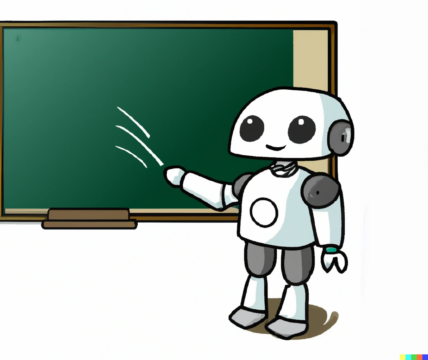What started as a YouTube channel to impart math is a household name in the world of EdTech. Khan Academy, started by Sal Khan, is on a mission to offer free education around the world.
Khan Academy India (KAI) is an Indian non-profit organisation with the objective of offering free world-class education to millions of Indian students. Khan Academy and Tata Trusts formed KAI. They have quizzes, questions, videos, and articles about arithmetic, biology, chemistry, physics, history, economics, finance, grammar, and more.
Read more: {Startup watch: InnAccel} ‘To innovate & domestically manufacture MedTech suited for Indian healthcare’
Students can learn at their own speed with practise exercises, instructional videos, and personalised learning dashboard. They emphasise skill mastery to help students build solid foundations for future learning.
Anyone with a low-cost smartphone from any location can access the same Khan Academy lessons as students in the world’s greatest schools. They also provide teachers with free, strong tools and lessons that help all children succeed.
The Tech Panda spoke to Sandeep Bapna, MD of Khan Academy India about the platform’s efforts to reach more people in India.

Sandeep Bapna
We are constantly working to raise awareness and accessibility of our platform so that more students can benefit from our learning content
“We are constantly working to raise awareness and accessibility of our platform so that more students can benefit from our learning content,” he says.
Customising Content to Vernacular Needs
Khan Academy’s lessons come in English, Hindi (Hinglish), Gujarati, and Kannada, and more, as the platform tries to reach as many students as they can. In India, the platform has over two million learners and 100,000 teachers using the platform every month to access content in languages such as Hindi, Hinglish, Gujarati, Kannada, and Punjabi.
“Most developed countries have a handful of major spoken languages. However, countries like India have multiple regional languages and vernaculars are the main medium for learning in rural and non metro cities,” says Bapna.
Since most of the high-quality educational content available online is in English, we identified this as a major barrier to learning efficacy
“More importantly, a vast majority of the people in these geographies are not comfortable speaking or understanding English. Since most of the high-quality educational content available online is in English, we identified this as a major barrier to learning efficacy,” he adds.
To address this challenge, the platform has prioritised the localisation and alignment of its content to vernacular needs.
“This is achieved through associations with local subject matter experts, governments, and public/private schools, which enable us to deliver learning content in regional languages without compromising its efficacy, integrity, or quality,” he explains.
The Non-profit Business Model
The platform’s business model has always been non-profit. It counts several leading global philanthropists and businesses among its trustees and sponsors, including Bill Gates, John and Ann Doerr, Google, and Ratan Tata.
Khan Academy was established and continues to operate as a non-profit organization, as it is the only business model suitable for fulfilling our long-term goal of providing world-class, free, and accessible education to every learner
“Their support and guidance have been invaluable to making high-quality learning content and solutions available to everyone, regardless of their geographical location or socioeconomic background,” says Bapna.
“Khan Academy was established and continues to operate as a non-profit organization, as it is the only business model suitable for fulfilling our long-term goal of providing world-class, free, and accessible education to every learner,” he adds.
Tech All the Way
Khan Academy started with technology, and it still uses technology to fulfill its goals. The platform uses a front-end ‘technology’ that is more open-source. Its videos are hosted on YouTube for ease of use and ubiquity. It also has a strong tech framework to address issues with latency and bandwidth that frequently crop up in remote areas with poor connectivity.
“This allows our recorded videos to stream without issues, at a bandwidth of around 1.5 Mbps/user on devices that can stream SD videos. While the live-action content requires slightly higher bandwidth, any learning exercises on Khan Academy can be accessed on a bandwidth of around 150 kbps per user,” Bapna explains.
The platform is designed in a way so that students can track their progress and parents and teachers can assess where their kids/students need more support and make better decisions
All the video content is made on relatively affordable software such as Camtasia Recorder/Studio and ScreenVideoRecorder, while graphics are introduced with free software such as SmoothDraw and Microsoft Paint.
“Overall, the role of technology at Khan Academy is to enable access to high quality educational content to everyone. The platform is designed in a way so that students can track their progress and parents and teachers can assess where their kids/students need more support and make better decisions,” he adds.
Growth Story
Currently, students and teachers from over 160 countries learn on the platform. Bapna explains that this is possible because of the support of their funders, which includes Tata Trusts, SBI Foundation, and CSF in India.
“They enable us to create world class learning content that is available for free to every learner,” he says.
We want to be the de-facto companion of choice for all learners in India to supplement their learning, at any time, in any place, on any device
Additionally, the platform works with several government partners and private organisations (Zomato, Snapdeal, Unilever among others) who help take the content to more learners, especially from rural India.
Future Plans
With a goal of making Khan Academy’s learning content and solution available and accessible to every student across the country, Bapna reveals their future plans.
“We want to be the de-facto companion of choice for all learners in India to supplement their learning, at any time, in any place, on any device,” he says.
Read more: {Crypto watch: Cashaa} A single bank account for fiat & crypto for individual & business banking
“We also wish to establish ourselves as the preferred tool that educators across the country use to transform their classrooms into places of learning and growth,” he adds.
To this end, the platform is localizing and adapting its existing content for major Indian languages. You can expect more such localizations in a broader range of vernaculars over the next few years. Khan Academy India has also aligned its entire middle- and high-school math catalogue to the curricula followed in the national- and state-level school boards, with subjects such as science soon to follow.












